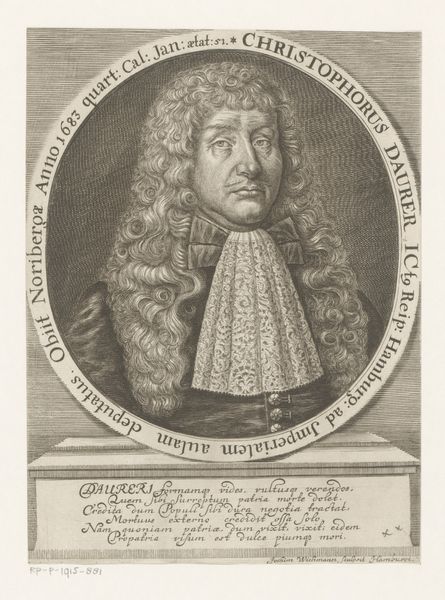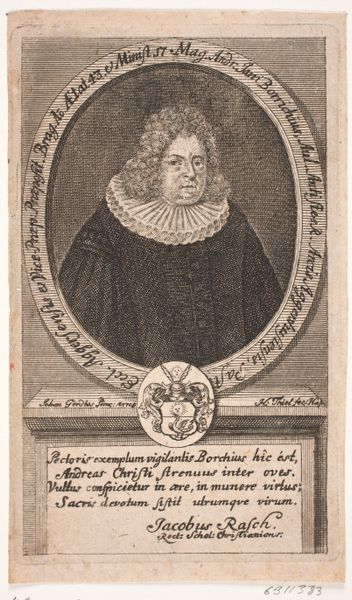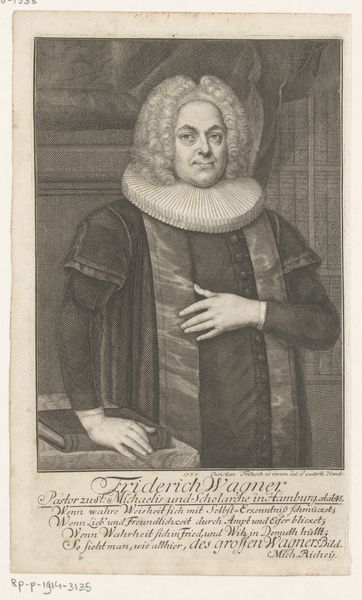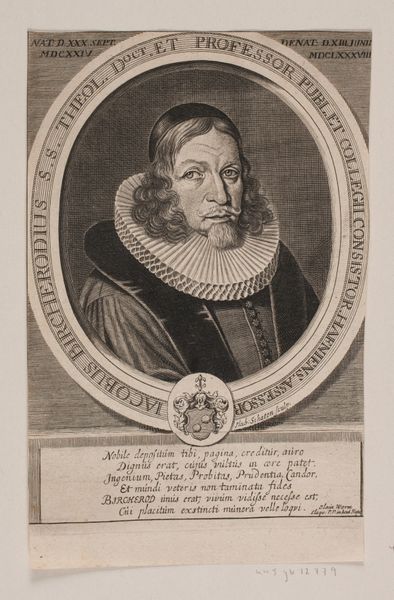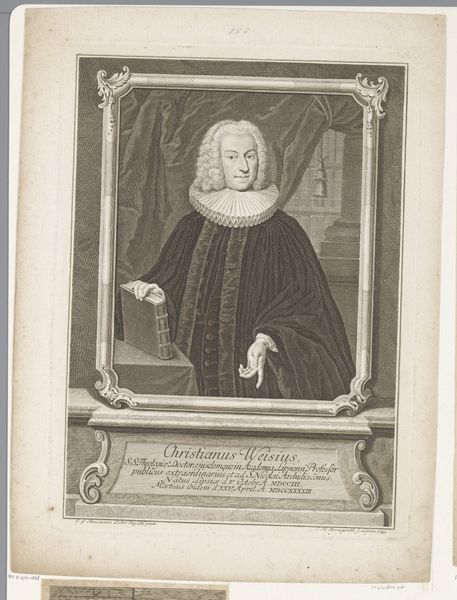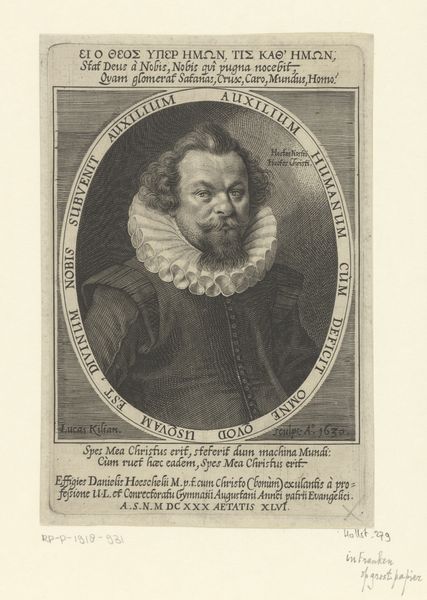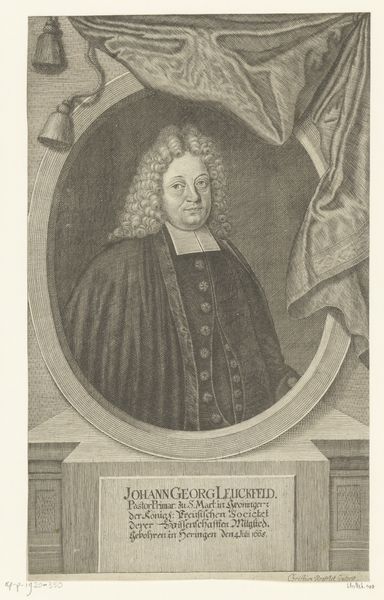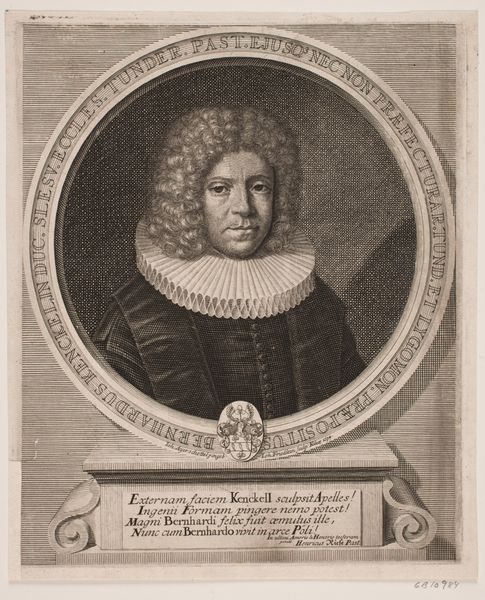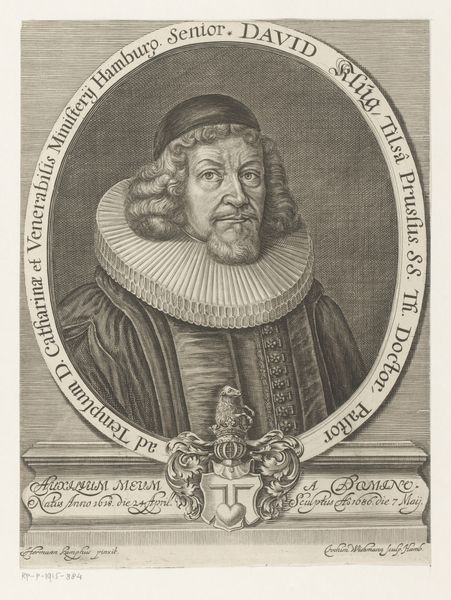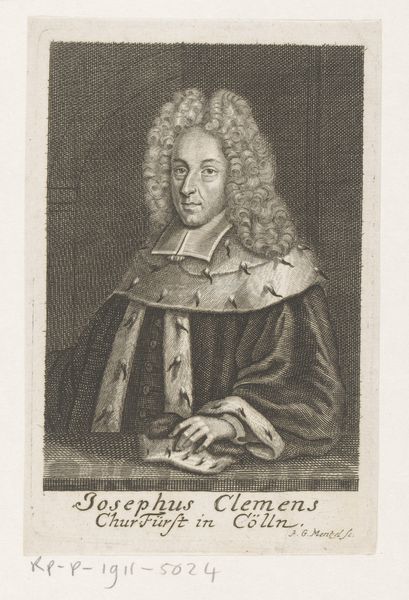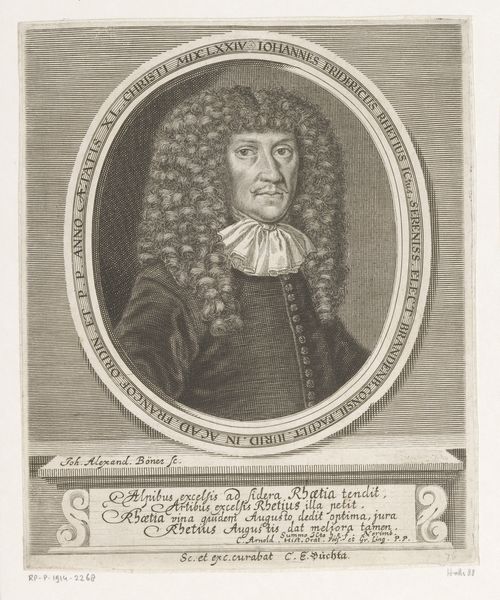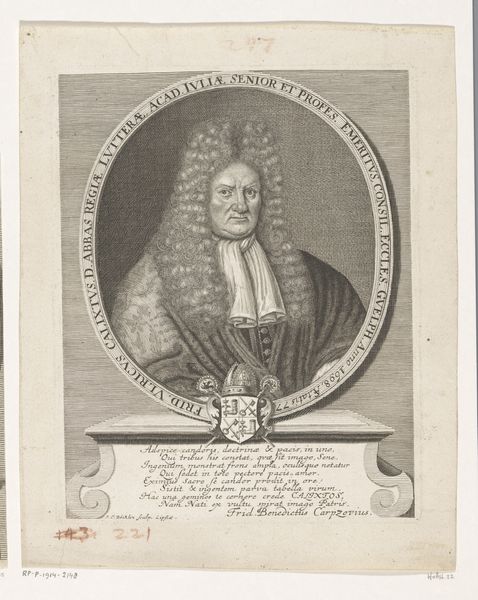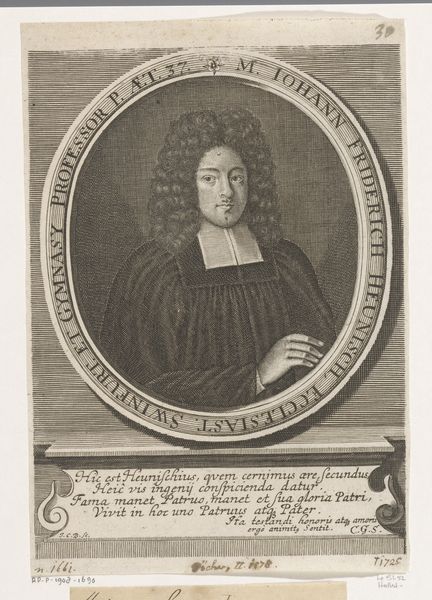
print, etching, engraving
#
portrait
#
baroque
# print
#
etching
#
old engraving style
#
engraving
#
historical font
Dimensions: 125 mm (height) x 81 mm (width) (plademaal)
Curator: Here we have an engraving dating back to somewhere between 1694 and 1698, currently held in the Statens Museum for Kunst. It's a portrait of Christian Bræmer by Hubert Schaten. The texture looks fascinating; what catches your eye about it? Editor: The gravity. A quiet intensity captured in this print. The stark contrast of the etching adds to its somber yet regal tone. The ruff around his neck is so intricately made it almost makes me itch just looking at it. How would a piece like this come to be? Curator: Well, being an engraving and etching, the process would have involved carefully carving lines into a metal plate to hold ink and transferring it onto paper. Considering Schaten, as the engraver, worked during the baroque period when printmaking became prominent, it’s fascinating to imagine the labor involved, the social standing of the engraver as craftsman, the relationship of art with rising printing technology, and finally, what a relatively accessible image like this meant for portraiture. Editor: Absolutely. And you're right. Look at the minute details; you can almost feel the pressure of the tool etching those tiny lines to shape his face. Think of all those artisan workshops with artisans huddled over etching equipment working day and night creating imagery that reinforced and spread the importance of elites at all levels. Curator: Right, there is an understated elegance to Bræmer's gaze, that’s meant to connect with those gazing up to him. I wonder, though, what did Bræmer think of this portrait? What was he hoping it might communicate about him? What does he want us to think? It also states on the print that he is at age 59; perhaps, this was commissioned to remember him to the world? Editor: These kinds of pieces allow us to dive deeper, consider not only Bræmer’s importance as a possible societal pillar of Denmark at the time but to understand the labor-intensive creation of art as essential historical documentation. Curator: It serves as a gentle reminder that behind every subject, like Christian Bræmer, there is also the careful work, technique, and story behind the piece itself. Editor: Absolutely. It offers a compelling intersection where individual narrative meets historical craft.
Comments
No comments
Be the first to comment and join the conversation on the ultimate creative platform.
